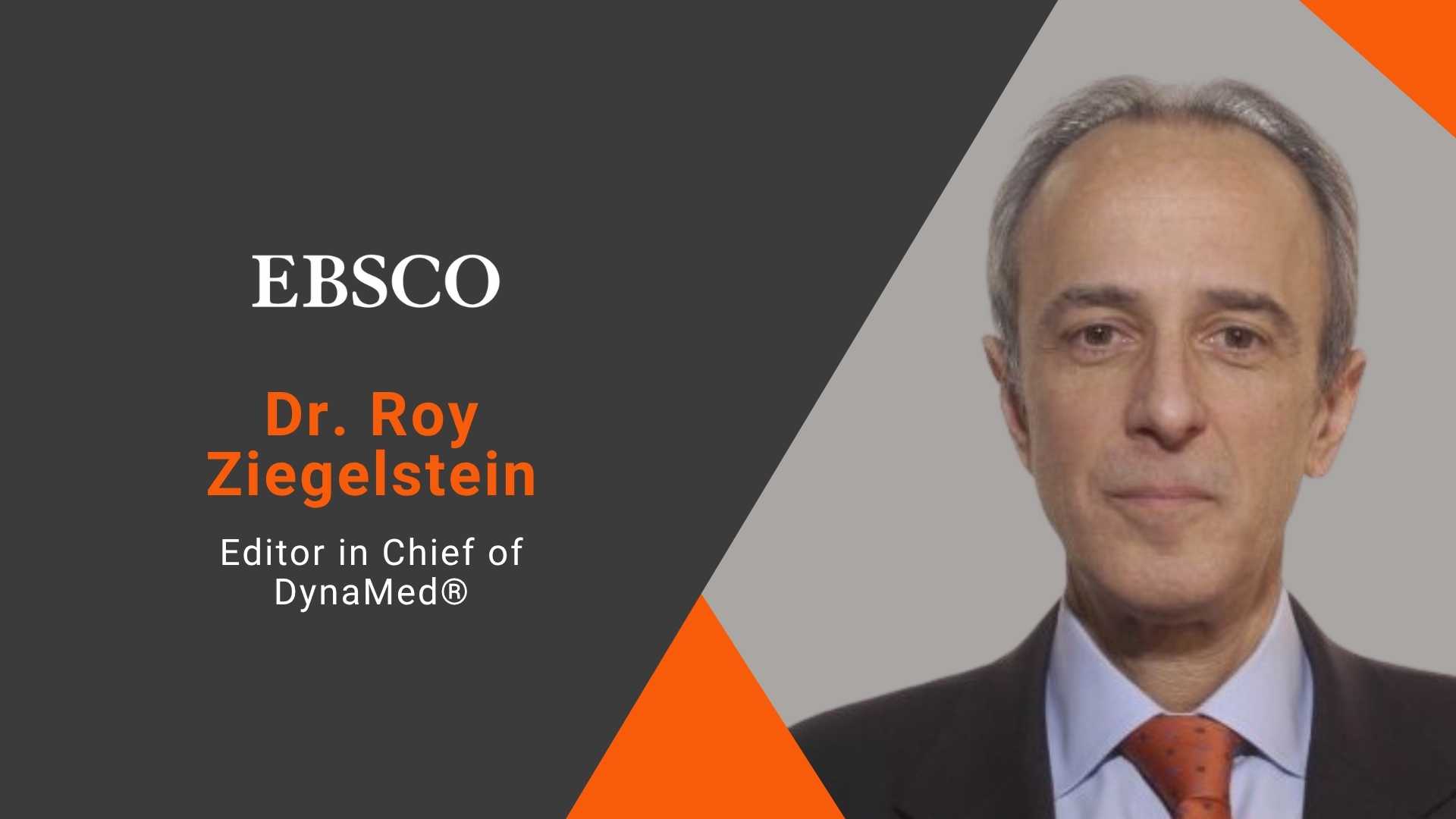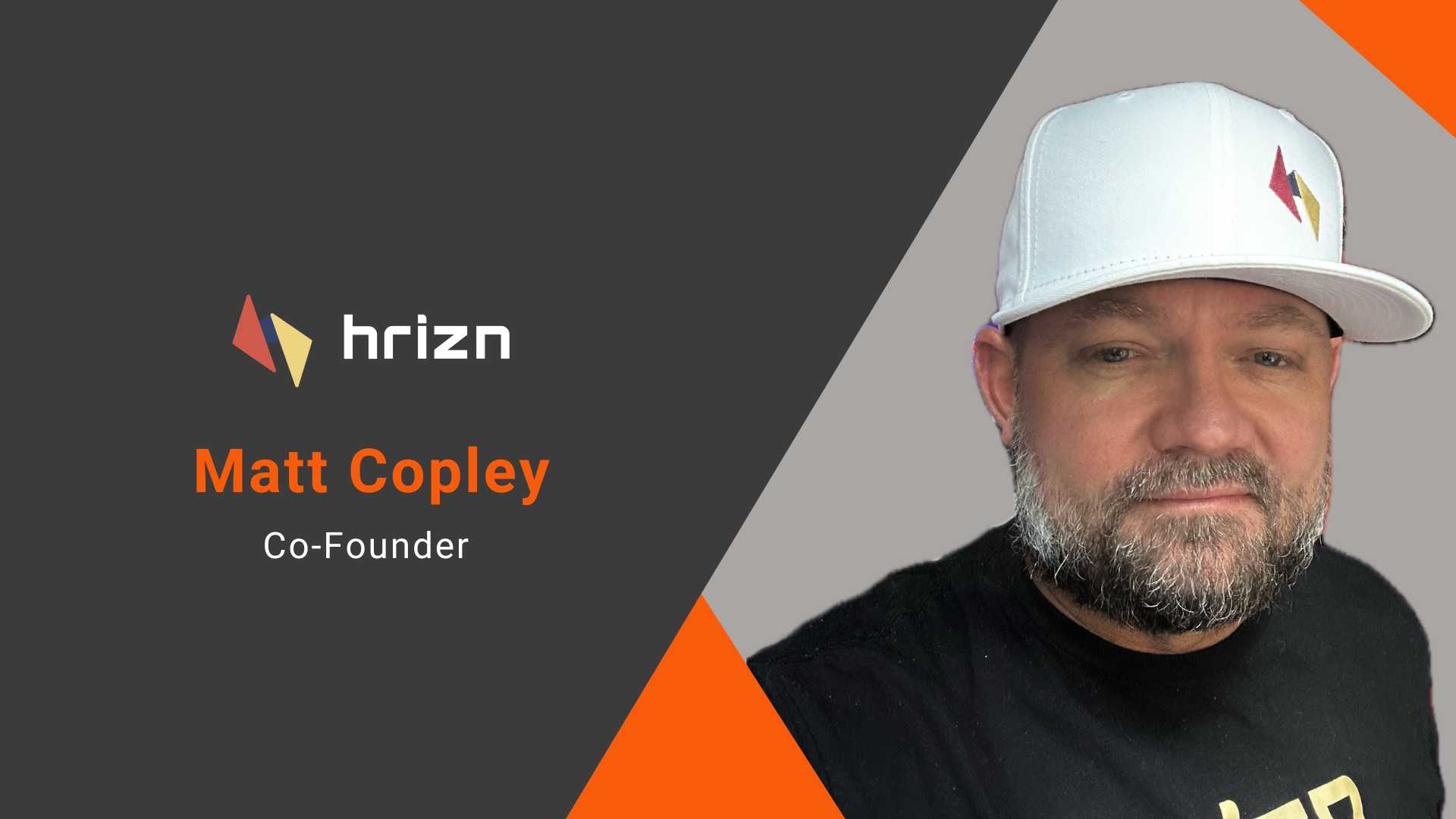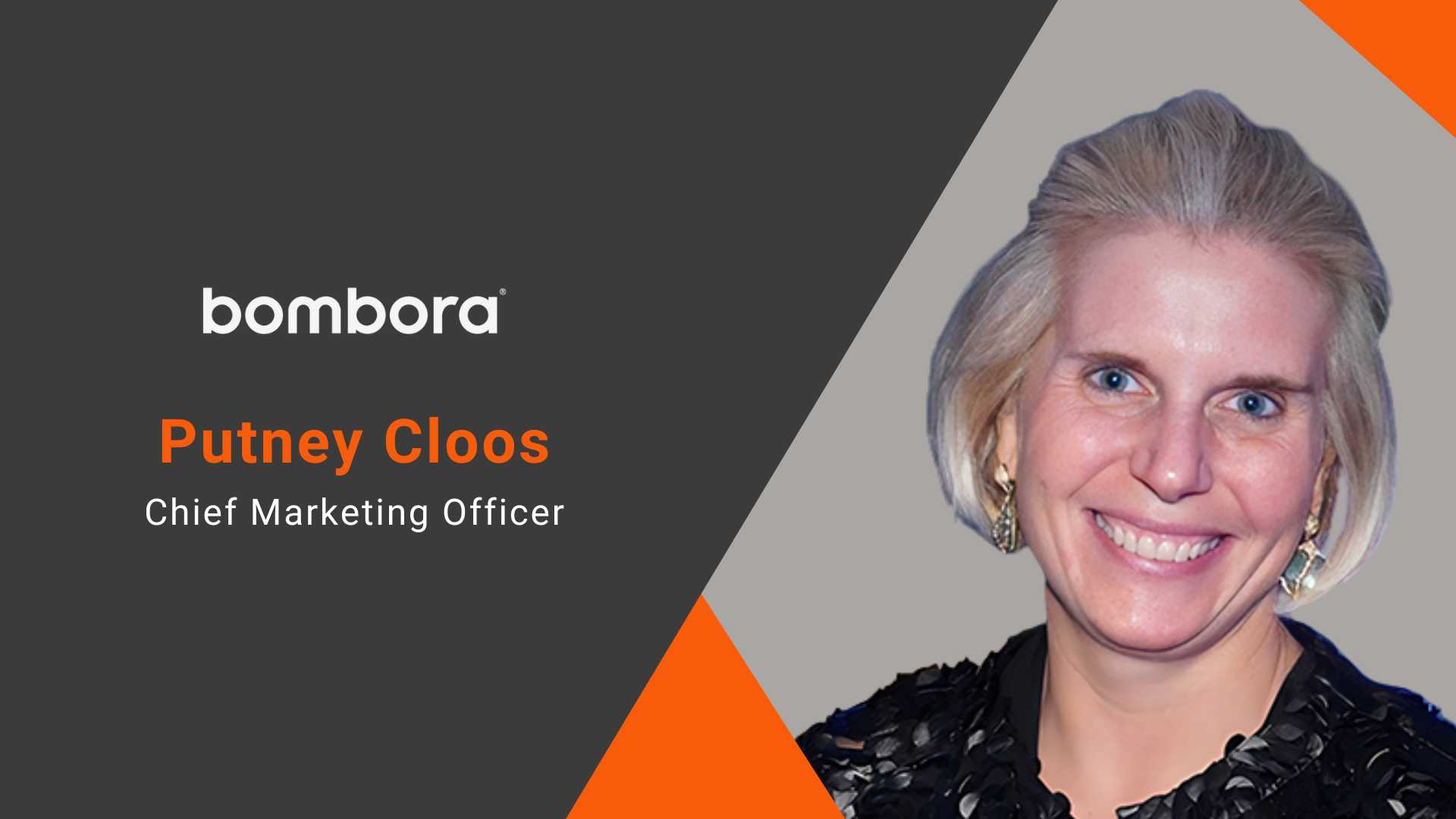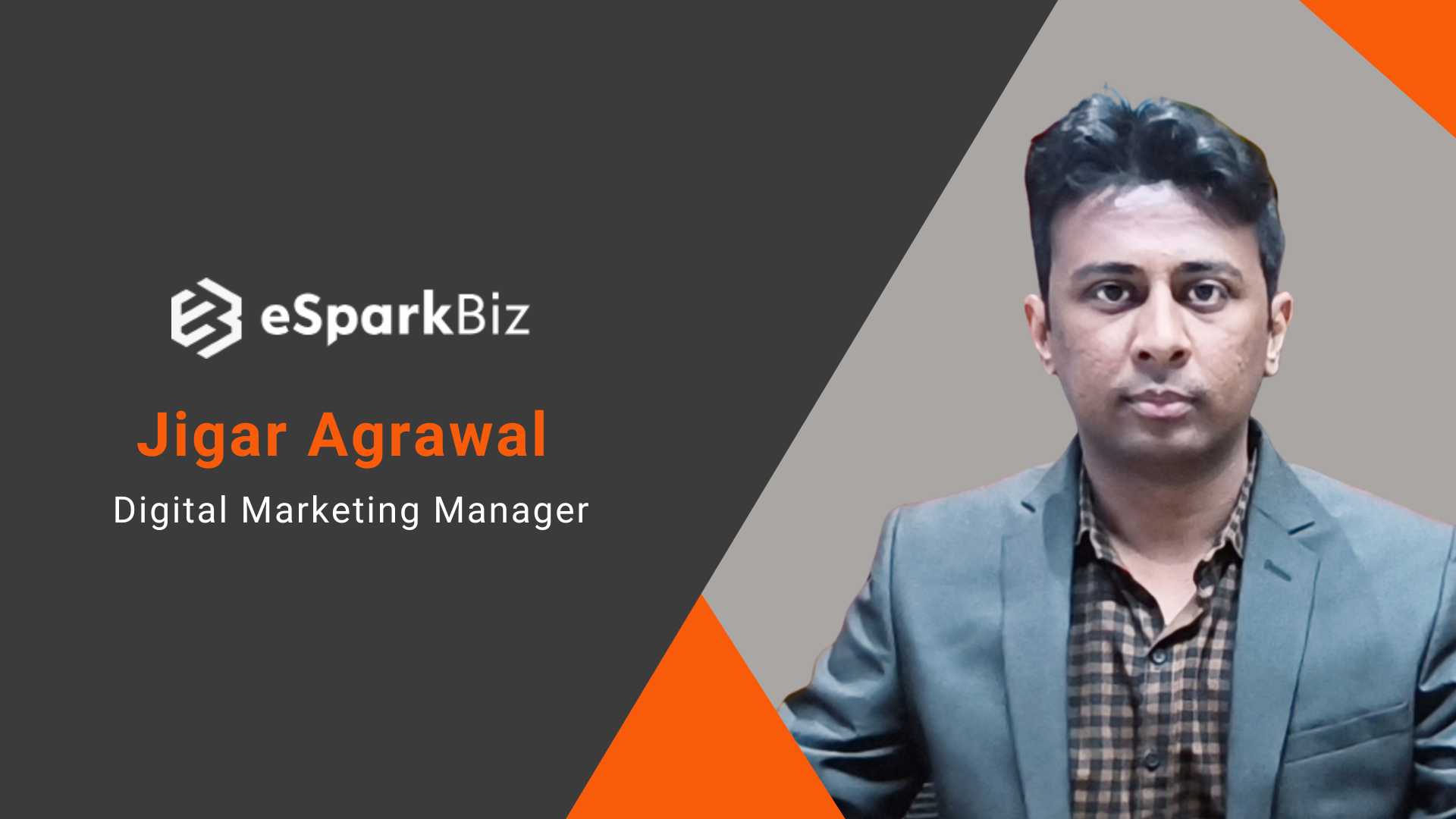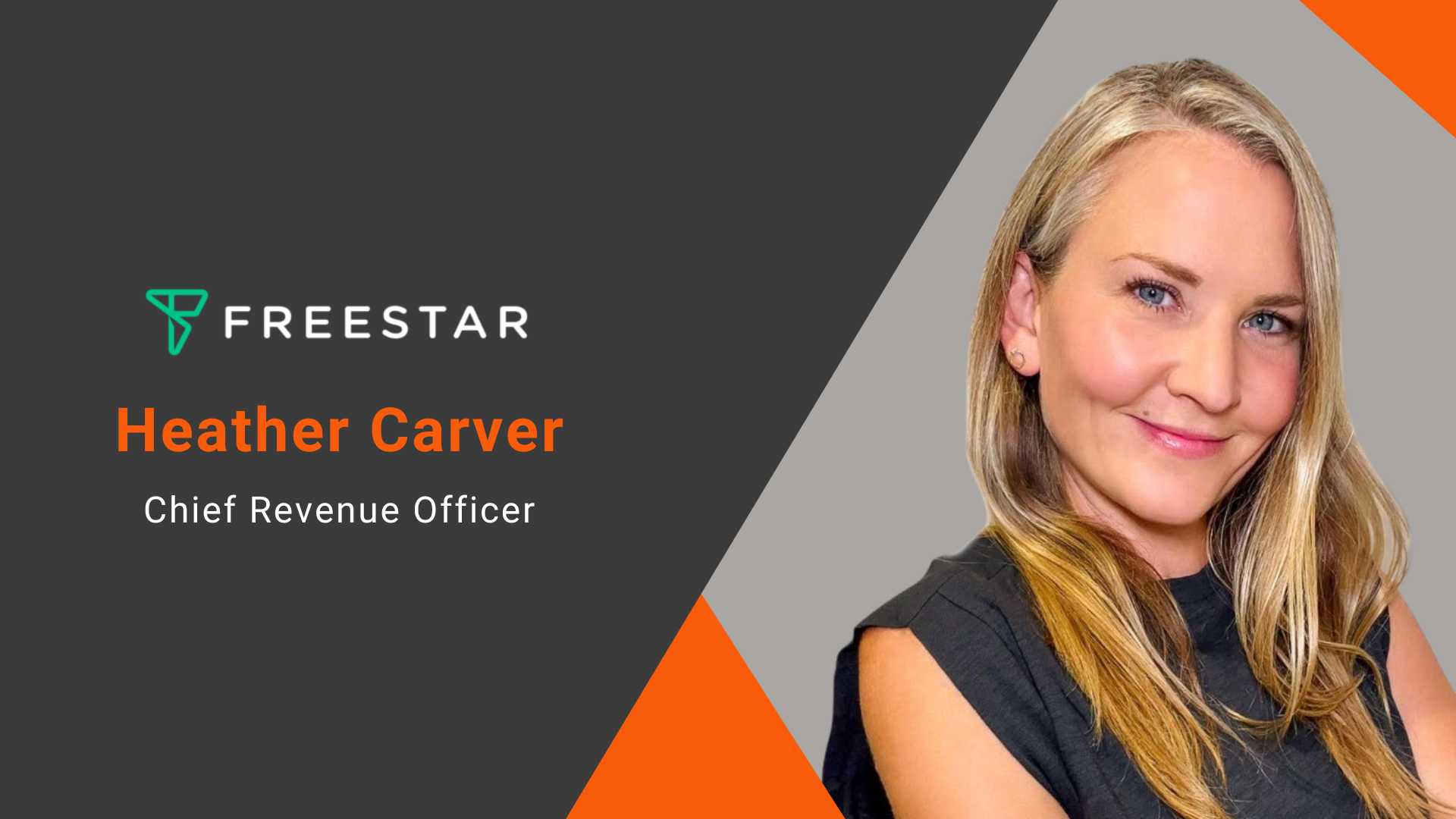
Interview
Dr. Roy Ziegelstein on Trust, AI, and the Future of Evidence-Based Medicine
business 4 Sep 2025
1. What safeguards are in place to ensure that AI-generated insights maintain clinical accuracy, trust, and transparency for healthcare providers?
I don’t think the term “AI-generated insights’ is quite right, since the term “insight” implies a clear and deep understanding and perception that relies on human experience and discrimination. I would say that at DynaMed and Dyna AI, insight is provided by oversight… human oversight of content to ensure accuracy, readability, and engagement. Human oversight to ensure that AI-generated information is clinically relevant. Human oversight to make certain that it is the kind of information that clinicians want when caring for other human beings.
At Dyna AI, a clinical assessment team provides ongoing evaluation to assess the accuracy and quality of responses. Dyna AI responses additionally provide the opportunity for users to provide their feedback, much as Waze collects information from users to modify their content. Indeed, responses to more than 3,000 customer queries by our Dyna AI team to date have exceeded a 95% benchmark for quality.
If queries are not adequately covered by our evidence-based content corpus or have not undergone a full clinical quality evaluation, Dyna AI will not answer the query or will provide information directing users to an alternate resource. References used to generate Dyna AI responses are always fully provided and available with one-click access directly to the source material, mitigating the risk of lack of contextual understanding.
2. How do you plan to balance speed and rigor in content development, especially in high-stakes fields like infectious disease, oncology, or cardiology?
Speed and rigor in content development are both critical, and never more so than today. Information is of limited use unless it incorporates the most currently-available evidence, however at the same time trust is something that is non-negotiable given what’s at stake. At DynaMed and Dyna AI, speed is ensured by our proprietary systematic literature surveillance system that selects the best and most recent evidence for all medical specialties, including infectious diseases, oncology, and cardiology. Once selected, the evidence is critically and meticulously appraised and summarized by a team of clinically-active, academically-renowned expert healthcare professionals, and then entered into our content which is updated on a daily basis, ensuring both speed and trustworthiness. With editors who are intimately involved in national and international professional societies, who create and revise core clinical guidelines, and who lead clinical and bench research in their healthcare fields, we are able to ensure that clinicians are provided with trustworthy, accurate information on advances in diagnostic techniques, new drug and device approvals, clinical trial results, and evolving treatment guidelines.
I think it’s also important to note that for evidence-based information to be useful at the point of care, it must not only be current and accurate, but also concise, easily and quickly digestible, and free from conflicts of interest. DynaMed and Dyna AI ensure that the only vested interest writers and editors have is their interest in providing current, accurate, trustworthy information to clinicians at the point of care that is free of industry bias, even when unintentionally introduced. That is essential for trustworthiness.
3. You serve a diverse global audience. What steps are being taken to ensure cultural and regional relevance in clinical recommendations?
Car manufacturers must ensure global usability by designing and adapting cars for specific regions. For example, they may need to switch the steering wheel if a car is built for a country that drives on the left side of the road. However, it is the driver who must ensure that the car is driven in such a way that it is relevant to existing laws in that country, province, state or region.
Much is the same with DynaMed and Dyna AI. We ensure global usability by incorporating recommendations from national and international clinical practice guidelines and evidence from clinical research studies performed throughout the world, making certain that content is inclusive of all conditions whether seen in the U.S. or in other countries. However, Dyna AI clearly notes that responses “should not be solely relied upon for medical practice. Interpretation and application are subject to the judgment of a healthcare professional.” To put it another way, it is the healthcare professional who – like the driver – must ensure that the information is applied in such a way to the care of the patient that it is relevant to existing cultural and regional issues. Indeed, I would go even further and note that it is critical for healthcare professionals to apply the information we provide to the care of the unique needs of the individual patient before them regardless of country or setting.
4. How do you collaborate with medical societies, hospital systems, or academic institutions to co-develop trusted content?
DynaMed and Dyna AI work with a variety of partners to co-develop trusted content. One example of this is our relationship with the American College of Physicians (ACP). The ACP – which has 161,000 members (including me) – identifies experts from their membership who review our content and make suggestions for improvement. This ensures that our topics are accurate and clinically useful at the point of care. We also work with the ACP to have access to their guidelines as they are being readied for release so that we can have them incorporated into DynaMed as quickly as possible. We also have a relationship with the American Academy of Pediatrics (AAP). In order to provide the highest quality content for our users, we license content from the AAP to be included in DynaMed topics. Similarly, we work with the National Comprehensive Cancer Network (NCCN) to provide access to their chemotherapy regimens. We have excellent working relationships with academic institutions and hospital systems that allow us to partner with them on innovative work. An example of this is the collaboration we have done in having institutions be beta testers for Dyna AI. As Editor-in-Chief, I look forward to adding to and enhancing these relationships for the benefit of DynaMed and Dyna AI users and the patients they care for.
5. How will Roy Ziegelstein background in medical education at Johns Hopkins influence your approach to clinician engagement and continuous learning?
I have dedicated my professional life to educating learners at the bedside, in the classroom and lecture hall, in journal articles, and in medical textbooks. I appreciate the sacred obligation to provide accurate healthcare information, however I also understand the importance of making the process of obtaining that information engaging and interesting. If information is rigorous, accurate, and free from conflicts of interest, but does not engage the intended audience, it won’t be used. One thing I intend to focus on at DynaMed and Dyna AI is ensuring that our content not only accurate, current, and trustworthy, but also engaging and even enjoyable to use.
More than 50 years ago now, a group of investigators conducted a fascinating study published in the Journal of Medical Education in which an actor calling himself Dr. Myron L. Fox delivered an animated and entertaining lecture on a topic he knew nothing about to a sophisticated audience of health care professionals, educators, and graduate students… who gave the talk overwhelmingly positive evaluations. I know that sounds unbelievable so you should look for the YouTube video of the Dr. Fox lecture online. You’ll be amazed.
The point here is not that educators should teach on subjects they know nothing about. Indeed, a subsequent study found that while the so-called “Dr. Fox effect” engages an audience, it does not translate into actual learning. But to me, it’s important to also note the opposite: accurate, evidence-based, high-quality information provided in a manner that is not engaging will similarly not translate into actual learning… whether at the bedside, in the classroom or lecture hall, or when delivering evidence-based clinical decision support online at the point of care.
6. What metrics or outcomes will define success for editorial and technological leadership?
It is important to us that independent healthcare research agencies such as KLAS that evaluates the performance of healthcare technologies honored DynaMed as “Best in KLAS for Clinical Decision Support” in 2025 and in two of the three previous years. Of course, the continuous feedback from our customers is also critical to ensuring the success of DynaMed and Dyna AI and to making any needed editorial and technological changes to make our products the best in class for those who are on the front line providing care for patients.
But the bottom line is that I want DynaMed and Dyna AI to be #1 in the industry. That’s my goal, and if it weren’t my goal… and if I didn’t think it possible… and if I didn’t think it deserved to be… I wouldn’t have taken on this role.
Get in touch with our MarTech Experts.
Hrizn’s Matt Copley on AI, SEO, and the Future of Automotive Retail
digital marketing 4 Sep 2025
1. Why did you choose to focus on dealership-specific workflows and inventory-driven SEO as the core of the platform?
After decades of experience across retail automotive, technology, and media, my co-founder and I kept encountering the same gap: SEO strategies often looked good on paper, but they rarely aligned with how dealers actually operate or how customers make decisions. Agencies had structured playbooks, but most were keyword-driven, templatized for scale, and disconnected from the inventory, data, and workflows that drive real revenue on the showroom floor.
As we began building Hrizn, Google’s Helpful Content updates only made the gap more obvious. Dealers and agencies needed a platform that could consistently produce meaningful, compliant, and context-rich content, at scale… while also adapting to fast-changing search dynamics and customer expectations. But no existing tools truly supported the complexity of automotive retail. So we built one from the ground up.
Hrizn was designed to meet customers at their moment of intent with content that’s not just visible, but useful. That means content that’s directly tied to the workflows dealers and BDCs rely on every day, grounded in VIN-level inventory data, and automatically linked to helpful experiences and conversion points like live offers, service incentives, and finance approval flows.
Inventory-driven SEO isn’t just a tactic, it’s foundational. When dealerships rapidly expand authoritative, unique content across their site and product inventory, the results are exponential: better visibility, higher Quality Scores in paid media, lower cost per click, and significantly improved on-site conversion rates. It’s not about chasing rankings… it’s about creating an owned content infrastructure that fuels both organic growth and paid performance.
Ultimately, we believe SEO in automotive can’t live in the abstract. Dealers don’t sell keywords… They sell cars, service, and trust. Hrizn bridges that gap by aligning content strategy with operational reality… connecting the agency, the dealer, and the customer in a way that finally makes content a profit center, not just a checkbox.
2. How do you handle localization and brand consistency across multi-rooftop groups or agencies managing multiple clients?
Historically, localization and brand consistency have been at odds. Dealers and agencies have often had to choose between one or the other; producing generic content at scale or manually customizing every page to stay on-brand. With Hrizn, that tradeoff no longer exists. We’ve engineered a platform where localization and consistency aren’t just compatible… they're a competitive advantage.
Hrizn is built to scale intelligently across multi-rooftop dealer groups and agency portfolios. Users can define brand voice, visual language, content guardrails, and editorial standards globally… then dynamically localize content by region, demographic profile, inventory composition, dealer tone, and zip code level search intent. It’s the difference between publishing for a market and actually connecting with it.
The platform supports deep learning across internal and external linking strategies, artifact training to help our models understand nuanced concepts and positioning, and hyperlocal optimization that ensures content performs in the backyard… not just in national rankings. That means we’re not driving traffic for traffic’s sake… we’re driving the right traffic with high commercial intent.
Whether it’s preserving a consistent luxury brand tone across 10 rooftops or surfacing city-specific service content based on regional demand signals, Hrizn ensures every piece of content reflects both the brand’s identity and the customer’s local context. For agencies managing dozens,or even hundreds of clients, Hrizn’s workspace segmentation features make it easy to orchestrate complex strategies while maintaining efficiency and creative governance. For OEMs wanting high-level compliance controls and brand language application, Hrizn supports the need while allowing the agency and dealer the creative flexibility to innovate and differentiate.
On a more operational level, Hrizn empowers OEMs, agencies and in-house teams to manage both macro content strategy (campaigns, seasonality, product launches) and micro content outputs (inventory markup, geo-targeted SEO, fixed ops education) in one unified workflow. The result is faster speed to market, stronger collaboration between teams, and a content infrastructure that gets smarter and more defensible over time.
In short, we help OEMs, agencies and dealer groups break free from copy-paste content at scale and move into a new era of intelligent automation. One where every word is aligned with the brand, tuned for local intent, and engineered to drive real results.
3. How does the platform support integration with existing CMS, CRM, or CDP platforms?
Hrizn was designed from day one with interoperability at its core. We know that dealers and agencies already rely on a complex tech stack across CMS platforms, CRMs, CDPs, and DMS tools. We designed our system to complement, not complicate, those workflows.
Our content delivery layer is CMS-agnostic, supporting direct publishing and export into the most widely used automotive web platforms. Whether it’s an in-house team managing a proprietary CMS or a large agency overseeing hundreds of rooftops across multiple platforms, Hrizn integrates seamlessly into existing publishing pipelines producing not just content, but the associated html code and meta data for easy transfer to CMS and automated formatting with the website CSS for beautiful native content integration.
For CRM and CDP connections, Hrizn is actively exploring enrichment through selective data integrations, enabling content to be informed by real customer behavior, lifecycle stages, and campaign strategies. This means, for example, that fixed ops content could be dynamically adjusted based on repair order trends, seasonal demand, or customer segment data… ensuring that what’s published isn’t just SEO-optimized, but conversion-optimized as well.
Looking ahead, the upcoming release of the Hrizn API will unlock even deeper integrations with CMS, CRM, CDP, and DMS platforms. These enterprise-grade connections will be available to strategic and enterprise partners, enabling powerful use cases like:
● Automated content personalization based on lead source or buyer profile
● Dynamic campaign landing pages that align with real-time incentive pushes
● Inventory-level content customization driven by aging, pricing, or merchandising data from the DMS
Our philosophy is simple: Hrizn doesn’t seek to replace the systems dealers already depend on, it’s designed to amplify their value. By turning structured and unstructured data into on-brand, compliant, high-performance content, we help OEMs, dealers, and agencies create meaningful customer experiences that are rooted in operational reality and measurable results.
4. How is performance tracked post-publishing? Are there built-in analytics or integrations with tools like Google Analytics or SEMrush?
Performance tracking is central to Hrizn’s mission - because in this space, content without outcomes is just noise. We’ve designed our platform to provide both high-level visibility and deep technical insight, depending on the needs of the user.
Hrizn encourages every user to monitor content performance through industry-standard tools like Google Search Console, Google Analytics 4, and leading rank-tracking platforms. These validations allow dealers and agencies to measure SEO impact in the context of their broader digital strategy and make data-informed decisions across channels.
For users and teams who need more granular insight, Hrizn Analytics provides a robust technical suite purpose-built for content-driven SEO. This includes advanced Google Search Console and Google Analytics connectors, keyword rank tracking, page-level performance data, and competitive visibility tools… giving SEO and content leaders everything they need to track what’s working, surface opportunities, and iterate with confidence.
In addition to SEO and traffic data, Hrizn also provides comprehensive content creation reporting capturing productivity, publishing velocity, content type distribution, and collaboration metrics. This is especially valuable for dealer groups and agencies who need to merchandise their body of work, justify value to internal stakeholders, or assess performance across clients and rooftops.
Our philosophy is simple: content at scale is only valuable if it performs at scale. With Hrizn, every piece of content is measurable, attributable, and optimized for ongoing improvement… so teams can move fast, stay accountable, and grow smarter with every publish.
5. How do you ensure the “helpful content” standard that aligns with Google’s evolving search algorithms?
At Hrizn, “helpful content” isn’t a buzzword… it’s a foundational principle. As Google continues to evolve its Helpful Content System and strengthen its policies against spam, thin content, and AI abuse, we’ve built a platform that not only aligns with these guidelines - but anticipates them.
Every piece of content generated by Hrizn is pushed through a rigorous, multi-layered quality assurance process that includes a wide range of proprietary automated checks and validations. This system ensures that each piece of content is:
● Unique and free from plagiarism or duplication across internal and external sources
● Factually accurate, drawing from dealership data and trusted contextual sources
● Optimized for the specific content type in line with Google’s most recent guidance
● Compliant with spam and quality policies, including those targeting scaled AI content abuse
Beyond these automated checks, our system leverages retrieval-augmented generation (RAG) techniques to ground content in real dealership inputs like inventory data, backlink training, service relevance, and brand documentation reducing the risk of hallucinated or off-brand outputs from language models. Structured data and schema markup are embedded directly into the content where applicable to further signal credibility, relevance, and utility to search engines.
Additionally, Hrizn gives users the ability to review, edit, and collaborate on content before it goes live, allowing for human oversight when needed. Because we truly believe that “human plus AI” exponentially outperforms either of the two parts alone… especially for regulated or nuanced subject matter.
We built Hrizn not just to scale content, but to scale trustworthy content. That means continuously evolving alongside Google, protecting our partners from compliance risks, and ensuring the content we publish is always built to perform, and to last.
6. How do you see yourself evolving in the face of new search paradigms like AI Overviews and Search Generative Experience (SGE)?
We view the rise of AI-native search, through features like Google’s SGE and AI Overviews, not as a disruption, but as a generational opportunity. These new paradigms are prioritizing answers over links, meaning content must be structured, semantically rich, and contextually aligned with real user intent. Hrizn is uniquely built for that future.
Our platform is already grounded in the principles that AI-driven search rewards: content that’s authoritative, purposeful, and tightly mapped to high-intent queries. As SGE becomes more prominent, we’re continuing to evolve by investing heavily in zero-click optimization… generating content that’s not just rank-worthy, but reference-worthy within the AI answer layer itself.
We’re actively developing tools that help our partners create and test content designed specifically for these emerging surfaces, like snippet-optimized summaries, question-based content objects, and structured data enhancements that send strong trust signals to search engines. We’re not trying to outsmart the algorithm, we’re building the infrastructure to feed it.
The dealers and agencies that win in this new landscape will be those who own their content layer and have the ability to adapt in real time. That’s exactly what Hrizn enables. We’re not chasing trends… we’re building the connective tissue between intent, inventory, and intelligent content delivery.
SGE is just the beginning. The future of search is generative, and Hrizn is engineered to lead it.
Get in touch with our MarTech Experts.
SurveyMonkey Expands to Costa Rica: Elias Conejo on Growth & Culture
marketing 4 Sep 2025
1. How do you evaluate the potential for Latin America as a growth market for SaaS and technology platforms?
Latin America presents a dynamic and rapidly evolving landscape for SaaS and tech. The region has a growing digital economy, a strong entrepreneurial spirit, and an increasing demand for user-friendly, scalable solutions that solve real business problems. At SurveyMonkey, we already serve over 19,000 paying customers in Latin America, which signals both trust in our platform and appetite for digital transformation. With local languages, cultural fluency, and on-the-ground support, we see incredible potential to grow our impact across the region.
2. How do you balance the need for local talent versus global talent mobility when expanding internationally?
We see global and local talent as complementary forces. Our goal is to build high-performing, culturally fluent teams that reflect the markets we serve. In Costa Rica, we’re tapping into a highly skilled local workforce across engineering, sales, marketing, customer success, operations, and more. At the same time, we foster global collaboration—sharing expertise, aligning on strategy, and creating growth pathways for talent across our offices. It’s not about choosing one over the other; it’s about building a networked organization where knowledge, innovation, and opportunity flow across borders.
3. How important are employee well-being initiatives (e.g., meditation rooms, pet-friendly zones) in your workplace culture strategy?
They’re central to our culture. We believe that a healthy, engaged team is a high-performing team. Our new office in Heredia reflects that with spaces and amenities designed to support both productivity and well-being, whether that’s a quiet space to recharge, a barista to brighten your morning, or simply being able to bring your pet to work. For us, these are more than perks. They’re expressions of our commitment to building a workplace where people can do their best work while feeling like they truly belong.
4. How do you leverage regional cultural values, like Costa Rica’s “Pura Vida,” to enhance team cohesion and company culture?
“Pura Vida” is more than a saying. It’s a mindset rooted in authenticity, optimism, and community. That spirit aligns closely with our own values of inclusion, balance, and human connection. As we build our team in Costa Rica, we’re intentionally creating a culture that honors both local identity and global belonging. This means embracing what makes each region unique while fostering a shared sense of purpose across all our offices. “Pura Vida” helps us stay grounded and connected as we grow.
5. With over 19,000 customers in Latin America, how do you tailor your product and marketing strategies to regional market needs?
Local relevance is key. Our platform is available in over 56 languages, including Spanish and Brazilian Portuguese, which helps make it accessible and intuitive to users across the region. Beyond language, we listen closely to our customers’ needs—through feedback, support channels, and usage data—and adapt our product experiences accordingly. From marketing campaigns to customer success programs, we’re focused on showing up in a way that’s thoughtful, culturally resonant, and value-driven.
6. What is your vision for the role of international offices in driving innovation and customer experience in a global SaaS company?
Our global offices are not just operational centers, they’re engines of innovation and insight. Local teams bring fresh perspectives, closer proximity to customers, and deep cultural understanding that shapes how we build and support our products. In Costa Rica, for example, our engineering and customer teams are helping us better serve users across the Americas, while contributing to global priorities. When we empower regional teams to lead, we strengthen our entire organization and create better experiences for every customer, everywhere.
Return of Touch: Heidi Waldusky on Experiential Marketing and the Future of Print
customer engagement 18 Aug 2025
1. As Gen Z and Millennials value multi-sensory engagement, how are you integrating touch, serendipity, and discovery into in-store or experiential strategies for Quad and its clients?
As a brand marketer, there’s no doubt that this research is making me reimagine how Quad shows up in physical spaces as a B2B marketing solutions company. After all, some of the marketers we’re trying to reach are Gen Z and Millennials, too. For my peers aiming to connect with consumers, our research is a reminder that even as we all march endlessly toward innovation, the people we’re trying to reach are human, with a real psychological need to feel more connected to the environments they’re in. The good news is there’s no singular answer here, and that leaves room for play—the very best part of our job.
2. How should marketers be rethinking content creation and delivery to ensure printed materials reinforce brand authenticity and drive real-world engagement?
While physical media might be decidedly analog, it still requires the right data, and more importantly, insights, to make sure it hits the mark—we ourselves continuously revalidate over 3 million data points on households. Print shouldn’t be treated as merely an add-on but rather a well-thought-out part of an audience strategy that’s proven to work.
It’s no secret Quad has always been bullish on print, but this research wasn’t an exercise in proving ourselves right—it’s about helping marketers take advantage of what The Harris Poll is seeing as a true cultural shift from digital domination to a more nuanced omnichannel approach.
3. Should brands capitalize on pop-up formats, event-based activations, or flagship experiences that turn brand presence into cultural moments?
I would offer a slightly different take. Brands aren’t just here to sell into or hijack culture; they’re made of it. The best brands are already in the mix, blending storytelling with real-world interaction. It helps to consider not just where your audience is physically, but when they’re most emotionally open. That requires timing, intention and staying attuned to both consumer behavior and cultural behavior. One tells you what people do, the other tells you what they believe.
But let’s remember: Not every brand moment needs to be a movement. We all know that when brands try too hard to manufacture cultural significance, it comes off as performative. Real resonance happens when you meet the moment, not when you force it.
4. What strategies ensure that offline interactions (e.g., store visits, mailed catalogs) seamlessly connect with follow-up actions online, such as remarketing or personalized outreach?
Offline is no longer off-the-grid. Every piece of print, every in-store moment, is now a data-enabled touchpoint that can kickstart or complement a digital journey. Through things like variable-data printing, Flowcode integrations, and real-time tracking, we can treat print as a signal, not a silo.
For example, a personalized mailer can prompt a landing page visit, which feeds back into your audience model and informs follow-up messaging. It's more than connecting channels—it’s about creating a frictionless conversation across them. Done right, a catalog isn't the campaign's last mile; it’s the opening act.
5. What structural or cultural shifts are necessary for marketers to prioritize long-term “Return on Touch” over short-term digital KPIs?
Structurally, marketers need to ensure their entire ecosystem is working together—that action begets action between any combination of touchpoints—online or offline. At the same time, adjusting complex marketing plans isn’t for the faint of heart. While marketers are prone to outsourcing help in disjointed ways, the complexity of our jobs requires nothing-less-than-seamless integration. A myriad of niche agencies won’t cut it anymore—marketers need true consultative partners that can help maximize every dollar from ideation and strategy through execution and production.
That said, short-term KPIs aren’t just for digital. Physical tactics can have fast returns, too. For example, pre-market testing solutions can help you determine the effectiveness of print or packaging before you spend a penny on production, This is just one way we can project expected outcomes, showing that physical marketing doesn't have to be a black box—with proper testing and measurement frameworks, we can quantify ROI across every touchpoint.
6. In an age where digital convenience is no longer enough, how are IRL experiences a competitive differentiator?
Convenience used to be the differentiator and now it's the expectation. For our industry, we see real-world experiences and physical media as the new edge because they create what digital doesn’t: true presence. Holding something, walking through a space, noticing the details—these are sensory cues that spark memory and build brand intimacy. That’s not nostalgia. That’s neuroscience. The brands who listen will be the ones who come out on top.
Get in touch with our MarTech Experts.
Chris Rosica on Crisis Comms & PR for Resilient School Districts
marketing 3 Sep 2025
1. What are the most common communications mistakes districts make during reputational crises and how can they avoid them?
There are three primary things school districts can do to ensure better crisis communications outcomes. These include:
- Adopting an immediate response mindset, which entails being crisis prepared (i.e., assigning an internal crisis management team and developing a scenario-based crisis communications plan that reflects education’s ever-changing environment). It is also wise to utilize outside PR/crisis counsel for issues, which mitigates risk and de-escalates reputation-damaging circumstances.
- Ensuring legal counsel and PR/crisis counsel work seamlessly to protect your district. Legal crisis counsel does not focus on protecting your image/reputation but will, of course, protect your legal interests while PR firms are not experts on the laws that govern.
- Telling your good news proactively so when a crisis does occur, your reputation is intact. Storytelling and advocacy are indispensable in education today.
2. How do you tailor crisis communications for school districts, where stakeholders range from students and staff to media, unions, and community leaders?
This is an extremely informed question as tailoring messages for various stakeholders is critical – not only when dealing with issues, but also in proactive PR and communications. We develop a message matrix for each scenario with clear delineation for different stakeholders to ensure we are touching on things that are relevant to them. It’s a matter of identifying the pertinent communication points for each stakeholder group and emphasizing or leading with those, following up with facts and supporting messages.
3. What role does local SEO and online reputation management play in district competitiveness and how should districts get started?
Another smart question because historically districts have not utilized SEO and rarely focus on online reputation management (ORM). This is because, heretofore, public education has not experienced such intense competition. Public schools have to think more like businesses and SEO and ORM are examples of how they must plan and work differently. With school vouchers on the rise, our agency views SEO and proactive ORM as imperatives.
4. How can districts balance transparency with message control in today’s polarized and fast-moving media landscape?
We say, “Tell who needs to know what they need to know when they need to know it.” This means concise communications to key stakeholders with an emphasis on truthfulness and, when appropriate, contrition. It does not mean message overload and explaining every detail, ad nauseam.
We urge our clients never to be defensive, and to tell the entire story (i.e., their positive actions, when and where appropriate). They should always be advocating for themselves.
We’ve witnessed the best defense being a strong offense. We believe in this axiom because it is critical to regularly disseminate your good news, and make sure to consistently share it with your stakeholders so when something negative pops up, you’ve already created a solid foundation of positive storytelling.
The polarization issue is real and not going away anytime soon. Therefore, the words you use are of critical importance. Take the lead from a professional communicator, an agency or individual that understands these nuances.
5. What internal communication tools or strategies are most effective in multi-building, diverse districts?
We have found video to be the single most important communications tool for internal communications in multi-school districts. Via a monthly video shot on a high-quality smartphone (not overly produced), the superintendent can engender trust, build rapport, demonstrate transparency, bring levity, and rally the troops. Of course, if we did not live in an entertainment-based society, video would not be so important. But we do and it is.
6. In your view, what will define a “resilient” public school district over the next 5 years and how should they prepare?
Districts that: regularly refine their positioning and messaging; have a strong crisis communications plan in place; conduct consistent and proactive PR/storytelling and digital marketing (e.g., SEO); and build a strong advocacy network that encompasses not only the school community, but the greater community (policymakers, influencers, alumni, media, etc.).
Get in touch with our MarTech Experts.
CSG’s Reid Jenkins on Broadband Innovation & AI-Driven CX
customer experience management 3 Sep 2025
1. As demand for multi-gig broadband services grows, how are you helping customers align product innovation with infrastructure investment to ensure sustainable market expansion?
Today, broadband leaders need the operational agility to launch new products, packages and bundles in days, not months. As customers expect faster, more personalized experiences, organizations need the infrastructure flexibility to adapt to market trends in real time and bring tailored offerings to customers.
Mediacom comes to mind as a perfect example of a broadband leader that knows how to scale and innovate without leaving existing customers behind. As the demand for multi-gig broadband continues to accelerate, Mediacom is expanding one of rural America’s most robust 10G broadband platforms. While growing their customer base, they are swiftly bringing new innovations to the market, ensuring their existing customers can maximize the value of their services across cable television, internet and telephone.
CSG works with broadband leaders like Mediacom to create operational efficiencies and to secure customer loyalty with a personalized, timely experience.
2. How are you helping organizations integrate real-time customer data to drive personalization, reduce churn, and enhance customer loyalty?
Loyalty is more critical than ever for sustainable growth, as it leads to increased customer lifetime value, higher profit margins and more stable revenue streams. In a crowded market, customers are more inclined to make decisions based on value and their experience with the brand, rather than service capabilities alone.
With that in mind, organizations need to prioritize clarity and personalization in every customer interaction.
First, they need to understand the customer. CSG helps organizations break down data silos to get a complete view of the customer across all lines of business. Second, they need to take action. With operational agility, organizations can use that data to deliver clear, contextual communications and quickly build new, personalized offerings that they know will resonate and drive loyalty.
3. What role do automation and proactive service delivery (e.g., proactive billing insights or order accuracy) play in your customer experience and operational efficiency roadmap?
Automation is crucial to deliver a proactive, timely customer experience at scale. But an automation strategy needs to be carefully scoped and designed with the customer in mind.
AI is not the answer to every problem. When approaching new AI use cases, organizations should focus on ones that positively impact their customers the most – identifying and solving breaks in the customer experience, strengthening data security and ensuring order accuracy.
CSG Bill Explainer, for instance, is an AI-powered solution designed to solve bill confusion, a multi-million-dollar problem for subscription businesses and a driver for as much as 50% of contact center volume. Organizations use CSG Bill Explainer to proactively reach out to customers in their preferred channels to explain changes to their bill – before they need to ask. This customer-focused automation allows organizations to reduce billing-related inbound contact, increase on-time payments, reduce contact center volume and build trust with customers.
4. How do shared values and a people-first culture influence your choice of technology or service partners, and how do you evaluate the long-term impact of these relationships?
To me, being a people-first company means that we care deeply about our customers and the outcomes we deliver. We care about trust and authenticity, and we don’t overpromise.
We choose strategic partners that share those same values and help us solve real problems, not buzzy trends. Our partner ecosystem is designed to eliminate complexity, accelerate innovation and scale solutions for sustainable growth.
Those shared values are also what makes our customer relationships so enduring. Once again, our relationship with Mediacom is a prime example. With three decades of successful collaboration, our business relationship has been built on mutual trust, a shared commitment to customer-centric innovation and a focus on delivering intuitive experiences. United in our goal of creating clear, connected experiences, we’ve achieved serious value and positioned Mediacom to meet and exceed expectations today and in the future.
5. What criteria do you prioritize when extending long-term partnerships to ensure alignment with future business goals, customer needs, and technological evolution?
Great question – because it really is about the future. When evaluating long-term partnerships, we focus not only in creating value today, but long term value. It’s never a one-and-done; it’s about helping our customers prepare for anything the future may hold.
Success to us is when our customers can move with total agility, responding to their customer needs in real time while planning for future customer expectations.
Take our expanded partnership with Amazon Web Services (AWS), which we’ve just announced. The fact is, organizations that don’t move to the cloud and embrace AI today will fall behind. In particular, telecom and financial services companies are under enormous pressure to modernize and innovate faster. We partnered with AWS to help our customers fast-track cloud transformation and gain access to advanced GenAI and agentic AI solutions, so they can innovate with confidence in the AI-driven future.
6. What emerging technologies are you exploring to enhance broadband delivery, reduce service friction, and create new revenue opportunities in a saturated market?
I’d be remiss not to bring up AI again. Broadband leaders are facing an ultra-competitive market, where customers have sky-high expectations for value. By applying AI to create faster, easier and more personal experiences, broadband providers can stand out and win.
As broadband and other organization leaders plan for the future, they will need to view AI not only as a way to cut costs, but as a tool for sustainable value-creation. We’re helping our customers identify the right AI applications and use cases for their businesses – ones with clearly defined scopes that actually solve a problem and generate value.
For example, when it comes to agentic AI, the opportunity is enormous – but so are the risks. A true agentic AI solution is completely autonomous, with the agency to remember, decide and execute. That means that it must be applied very thoughtfully, ideally layered over a platform that already understands the customer and the business. In fact, despite the amount of market chatter, right now there are only a handful of use cases where agentic AI works reliably. We’re helping organizations find the areas where they have the data, the system integration and the governance for agentic AI to be effective and trustworthy.
Get in touch with our MarTech Experts.
Bombora CMO on Contextual Targeting & B2B Intent Data
marketing 3 Sep 2025
1. In what ways do you see contextual targeting evolving your digital advertising strategy, particularly for complex or niche B2B industries?
We believe contextual advertising is a big opportunity for ourselves and also the brands and agencies that we serve with our Digital Audiences. Often, contextual advertising is thought of as a strong ‘plan B’ to hedge against changes in privacy regulations or the deprecation of 3rd party cookies, or as a programmatic ‘safe haven’ to protect against brand safety issues. We think this massively under sells the contextual opportunity. Contextual advertising, especially now given AI’s sophisticated ability to understand nuanced content across all mediums (digital print, CTV, digital audio), is an opportunity to achieve more relevant ad placement and channel integrations. More relevant placements are a foundation for better audience experiences which lead to higher engagement rates and elevated behavioral outcomes. Today’s contextual advertising takes the old adage of ‘meet your audience where they are’ to a whole new level.
2. What steps is your team taking to ensure that your ad campaigns are not only reaching the right audience, but also aligning with moments of high purchase intent?
We use our own Company SurgeⓇ Intent data to ensure that we are reaching our target audience at the right moments across the buyer journey. Our Intent data, derived from our one-of-a-kind B2B Data Cooperative, is an incredible asset because it gives us predictive insight into a huge set of “right moments”: when a prospect account is in early research phases, comparing specific solutions, and ready to make a purchase decision. We also have insights into customer behavior occurring on and (more importantly) off our digital properties. These differentiated insights allow us to customize our messaging and tactics to meet the account where they are. We also apply our Intent data to fuel strategies to mitigate our own customer churn and take advantage of opportunities with companies using alternative, “non-Bombora” data solutions. For example, right now we are running a “competitive take-out” campaign fueled by insights from our Data Cooperative.
3. What challenges have you encountered in transforming raw intent signals into actionable, revenue-driving campaigns across digital platforms?
When I look across the B2B ecosystem I see a multitude of high potential signals that could empower marketers to create highly relevant experiences that would benefit their target audience. The challenge is that these signal “owners” do not have the ability to turn them into addressable account-based audiences. Audiences that can be reached in an efficient and repeatable way through digital marketing channels.
4. How do you approach vendor selection when considering solutions that combine data intelligence with programmatic precision?
Here at Bombora, we live by the advice we give our customers and partners: bear in mind “not all B2B data solutions are created equal”. To this end:
i. It is extremely important to understand the source, scale and durability of any data you are using to drive your business. It is risky to build strategies on data from unconsented sources, from black box models without transparency, or that may be locked into specific platforms limiting your ability to create unified prospect and customer experiences.
ii. Prioritize solutions that allow you to activate unified audience experiences across platforms, aligned to the true buyer journey. We all know that the B2B buyer journey is a nonlinear experience with a multitude of touchpoints across tactics. Knowing is one thing, delivering against this is another.
5. With over 500 unique audience segments now available, how do you prioritize which segments to target in your industry-specific campaigns?
I believe that audience configuration should be defined by the campaign objective. To me, the campaign objective is a dual focus on the who (the messaging target which in B2B is typically a “buying group” or set of influential stakeholders) and the what (the intended shift in behavior within this group (e.g., enhancing awareness or encouraging evaluation). These two elements allow us to precisely select the best account segments (account lists with attribute, behavioral, or signal overlays) and the most effective mix of channels and creative formats for delivering the message which ultimately dictates the necessary mix of addressable identifiers. Of course, realistically scale and efficiency is an important consideration but these need to be secondary to the campaign objective.
6. As B2B buyers engage more digitally, how is your organization ensuring that marketing efforts are tailored to individual buyer behavior and contextual relevance across channels?
Tailored marketing is only as good as the granularity and accuracy of the insights that fuel it. We are rolling out solution enhancements that will empower marketers to be more tailored. Three different examples bring this to life:
i. We are rolling out B2B persona level enhancements to Company SurgeⓇ Intent data which give marketers predictive insight into the functions, seniority levels and geographic location of members of an account’s buying group. We also offer buying stage analytics which allow marketers to map accounts to their position in the buyer journey and customize content, messaging and tactics to meet these accounts where they are.
ii. Our Visitor Insights identity and enrichment tool allows marketers to identify anonymous website visitors providing not just the account/ domain identity but also insights into the content that this visitor has been researching most recently. In real time our solution empowers marketers to customize the content of their site or retargeting campaigns based on these insights.
iii. In April we announced a new partnership with Simpli.fi. Through this integration, Bombora data is powering 76 contextual topic clusters (including topics like Machine Learning and Artificial Intelligence and Marketing Technology) that B2B advertisers can use for targeting to ensure that their digital ads and content experiences are placed in as relevant destinations as possible. This groundbreaking solution was recently recognized with Just Global’s Dick Reed Award for Channel Advancements & Innovations.
AI in Marketing 2025: Seymour Duncker on Strategy, Personalization & Pitfalls
artificial intelligence 27 Aug 2025
1.What marketing functions or workflows have benefited the most from AI so far and which areas remain largely untapped?
While the hype around AI often runs ahead of reality, digital advertising has proven to be one domain where the lift has been real and measurable. At Decision Counsel, we can certainly attest to that. Ad production—especially for programmatic platforms—has seen clear gains thanks to the rules-based structure of digital channels. Marketers can now spin up thousands of ad variations from just a few core creatives, rapidly testing at scale to find what works best. More broadly, the earliest wins with generative AI are concentrated in “maker” workflows. According to Jasper’s State of AI in Marketing 2025 survey, nearly 60% of marketers already use AI for everyday content tasks, including copywriting, ideation, SEO tweaking, campaign testing, and desk research.
Meanwhile, most marketing teams still have a long way to go: only 29% rate their AI maturity as “advanced.” More transformative applications—like enforcing brand governance, automating full campaign workflows, or delivering true one-to-one personalization—remain underdeveloped. And short-form video still has yet to see generative AI break into mainstream production. The next wave of adoption will go well beyond content generation, and will be about finding ways of embedding AI deeper into higher-level decision-making, audience needs, and the full customer journey.
2.From your vantage point, what are companies most commonly getting wrong in their approach to AI-powered marketing?
The most common misstep companies make is expecting magic. Especially in creative teams, there’s often a misplaced hope that AI tools will act like a “one-click” fix—tap a button and watch campaigns write themselves. But creativity doesn’t work that way, and neither does AI. The real work lies in understanding the creative process deeply enough to thoughtfully integrate new tools—augmenting ideation, accelerating iterations, and ultimately optimizing the entire workflow.
Jasper’s survey also found that 67% of marketers now cite “lack of education and training” as the number one barrier to adoption—up from 64% last year. Other leading blockers include “lack of awareness or understanding” (56%) and “lack of strategy” (43%), with “lack of resources” also rising. Concerns about “unknown risks” are decreasing—down to just 25%—showing that fear is fading. The real obstacle isn’t the fear of AI, but a lack of readiness to utilize it effectively. Closing these gaps in literacy, strategy, and governance is the clearest way forward.
3.Was there anything you expected to happen with AI in marketing that hasn’t materialized or that’s taken a different form than anticipated?
Generative AI is seemingly everywhere, but still far from fully integrated. While individual use cases like faster copywriting or sharper research have delivered tangible wins, most marketing teams still haven’t figured out how to connect these wins across the full value chain. Critically, few have linked AI efforts to ROI in a way that feels systematic or scalable. In other words, the novelty has worn off. What’s missing now is the operating model—the repeatable processes, playbooks, and cultural alignment—that elevates isolated success into enterprise-wide transformation. Sixty-three percent of marketing teams already use generative AI, 78% of which report improved outcomes, according to Jasper. However, only 43% of adopters have formal enterprise-level AI programs in place. Most teams only began serious experimentation in 2024, and full-on pilot failures are rare—just 3%. The tools are working. What’s lagging is the strategic framework to turn experimentation into a durable advantage.
4.What risks do brands face when personalization becomes overly automated or intrusive? How can they avoid that trap?
There’s a fine line between personalization and intrusion—and brands are stumbling across it. When AI-driven personalization becomes overly automated or impersonal, it doesn’t deepen loyalty; it triggers backlash. Simply labeling a product as “AI-powered” can dampen consumer enthusiasm, with broader concerns about AI, such as data privacy and job displacement, also coming to mind. Instead of feeling seen, customers might start feeling watched, and that’s a trust killer. Duolingo and Audible each learned about these sorts of pitfalls the hard way earlier this year. After all, personalization should be a tool for empathy, not efficiency at all costs.
Avoiding the over-personalization trap means finding a way of blending hard systems with a soft touch. That starts with privacy-by-design: only collect what you need, get clear consent, and explain the value exchange in easy-to-understand language, not legalese. Then integrate real-time sentiment tracking, straightforward opt-outs, and emergency “kill switches” that halt personalization flows when a user shows signs of discomfort. Brands that get personalization right anchor it in the C-suite. As McKinsey advises, a “leadership triad” of CEO, CMO, and CFO should jointly own the AI agenda—so goals, ethics, and accountability stay intertwined from day one.
5. What are the biggest challenges marketers face when implementing AI from data, tech stack integration, to internal alignment?
The biggest AI implementation hurdles often are less about adopting new tools and more about overcoming the drag of old ones. Most marketing tech stacks were designed for batch email campaigns and clickstream analytics, not for AI-driven workflows powered by real-time vector embeddings or agents. Data silos and technical debt are real and widespread: 86% of enterprises say they must overhaul their systems to deploy AI agents effectively. And even where the desire is there, many teams are still buried under the weight of maintaining legacy infrastructure. Even with the right tools, transformation stalls if people and systems aren’t ready. Many marketing teams aren’t yet AI-literate and still wary. AI’s biggest gains, however, come from deep workflow integration. The art is in pushing forward without getting stuck in the weeds of outdated systems. The solution lies in incremental embedding, thoughtful upskilling, and change management that balances the potential of AI with the inertia of the past.
6. Is there anything you don’t think AI will solve or shouldn't try to in the marketing space?
AI should never solve for the heart and soul of a brand. AI can and will increasingly help and aid in that process, certainly, but ultimately that’s the marketer’s job, and it requires an elevated sense of empathy, nuance, perspective, wisdom and judgment that, as far as I can see, only humans and the human experience can provide. Without true heart and soul—the kind you get from a human marketer—branding will always fall flat, and no amount of AI innovation can reproduce the trials, tribulations, fear, loathing, and joy of a person pouring themselves into a brand.
AI is a tool, not a crutch. And it can very easily be misused or overused. Discernment is key, and as AI advances, so will the importance of the ability to discern when AI is appropriate and when it is not.
Get in touch with our MarTech Experts.
Page 5 of 37
Most Recent
The 2025 Reality of the Solo Marketing Coordinator
Interview Of : Debra Andrews
How AI Is Transforming Martech – Jigar Agrawal from eSparkBiz
Interview Of : Jigar Agarwal
Transforming Marketing into a Growth Engine
Interview Of : Alexandra B. Mazzi
AI Search Optimization Can't Wait: Why Marketers Must Adapt Now
Interview Of : Laurie Naspe
The Rise of Agentic AI: How MetadataONE Is Transforming the Entire GTM Workflow
Interview Of : Lisa Sharapata
How Freestar and Audigent are Powering Future-Proof Publisher Demand
Interview Of : Heather Carver
